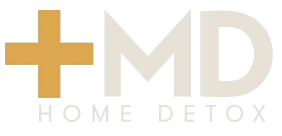By Jose Hernandez
If you’ve been through any type of treatment for drug addiction or alcoholism, you’ve probably heard the term cross addiction. This is a common occurrence following the treatment of ones addiction, but it can be addressed and treated. In this blog, we will discuss what cross addiction is, the common types of cross addiction and how to avoid it.
What is Cross Addiction?
Cross addiction occurs when the addict or alcoholic gives up one addiction and trades it for another. For example; a heroin addict who gets sober may not think he or she is an alcoholic. Once they overcome their addiction to opiates, they think they can drink safely. After all, they don’t have a history of alcohol abuse.
When the drug of choice is removed, it’s natural for the addict to want to replace it with something else that will alleviate the shame, anxiety or fear they were masking. This is common for addicts, or alcoholics, who haven’t found a solution to their problems through a 12 step program or therapy yet.
Cross addiction can also happen when a recovering addict, or alcoholic, is given medication to treat an injury years after they get sober.
The disease of addiction comes in many forms and it’s not always a mood altering drug. Many addicts and alcoholics turn to things like food, exercise, work or even intimate relationships to fill the hole their addiction once filled. On the outside, the obsession looks very similar to their drug of choice. It can consume their thoughts, time, and money and can even cause turmoil in their personal relationships or jobs. They’re still not free; they’ve simply traded one obsession for another.
How Does Cross Addiction Work?
Cross addiction is not a sign of weakness. It can disguise itself as any substance or activity used obsessively to escape from everyday life
Alcohol and drugs activate the reward center in the brain. When activated the brain releases a feel good chemical called dopamine. Dopamine can also be released through other addictions such as gambling. The brain doesn’t always know the difference between a chemical and behavioral addiction, and both can initiate the release of dopamine.
What are the Warning Signs?
The biggest warning sign of cross addiction is using a drug or activity because of the way it makes you feel. While doing something because it makes you happy or fulfilled isn’t always a sign of this addiction, doing it because you don’t want to feel your emotions is.
Cross addiction is common in early recovery, because the feelings that were being suppressing can be overwhelming when the drug of choice is removed.
The new intimate relationship may create a distraction and offer relief from the guilt you may be experiencing in early sobriety. You’re simply using something else to change the way you feel, and to avoid dealing with the root of your problem, just as you did in your addiction.
What Can You do to Prevent Cross Addiction?
Be aware of how certain activities or substances make you feel. Notice the intentions behind your actions and behavior. Reach out to a counselor, or someone you trust, for advice if you’re afraid you may be at risk for cross addiction.
Often times the people closest to you are the first to notice erratic or obsessive behavior. If someone has expressed concern about your behavior try not to get defensive or take it personally. Again, honestly look at the situation and try to be open-minded to the possibility.
Treat Addiction With MD Home Detox
Addiction is treatable and cross addiction is avoidable. Educating yourself on the risks and warning signs will prevent the disease from coming out of remission.
If you or a loved one are experiencing any kind of addiction, including cross addiction, contact us today and speak with one of our professionals. The best time to begin your recovery is now.

